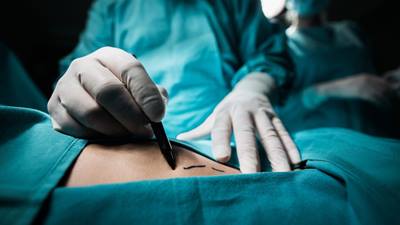When we think of fat, we often think of areas of the body where we’d like to reduce it. But body fat serves an important purpose. It stores excess calories until needed and releases hormones that control our metabolism. But fat can do even more. Through fat transfer or fat grafting, we can heal tissue, treat painful nerves and improve appearance.
Fat as a Healer
Fat contains a significant number of stem cells, the largest of any tissue in the body. These are similar to stem cells found in the bone marrow, but are easier—and less painful—to obtain. Exactly how fat transfer helps tissues heal is still unclear. However, researchers believe it has to do with mesenchymal stem cells (MSC) found within fatty tissues. MSC are specialized adult stem cells that can produce multiple types of cells in the skeletal tissue.
Fat transfer can be used in a variety of ways, and we continue to discover new ones. Scars have responded favorably to fat transfer, with improvement in their contour, texture, color and hardness after fat grafting. Fat grafting also can be used to treat painful neuromas (nerves that have scarred abnormally) that develop in areas of trauma or surgery. Finally, in areas where surgery or trauma have caused volume loss, fat can be used to fill these regions and improve the contour deformity.
Fat transfer also can be used for:
- Breast augmentation or enhancement after construction
- Buttock augmentation
- Poor scars/burns
- Amputation pain/thinning of skin
- Radiation therapy/skin changes
- Chronic migraines with specific trigger points
- Foot fat pad atrophy
- Hand rejuvenation
- Facial rejuvenation (i.e. lip fillers, filling of tear trough)
Fat Transfer: Benefits and Risks
Fat transfer has many advantages compared to other techniques. It uses your own tissue, so the transfer won’t be rejected. While some treatments may require more than one procedure, many can be done in one session in the office or operating room. In all these cases, liposuction (the process of removing fat) is an outpatient procedure where you go home the same day, avoiding an overnight stay in the hospital. Additionally, it is a relatively pain-free procedure with minimal down time.
The risks of fat transfer include the risk to the donor site (where fat is taken) and to the recipient site (where fat is placed). Typically, these include over or under removal/placement of fat. Because liposuction is used to remove the fat, contour irregularities are possible, along with fluid collections under the skin. Most of these can be corrected easily in an office procedure or a revision in the operating room. A rare but severe complication is a fat embolism, where a fat molecule becomes lodged in a vein and travels to the lung.
The Fat Transfer Process
Fat transfer works by “borrowing” fat from one part of the body and moving it to another.  Liposuction is used to remove fat from any area of the body where there is an undesired amount of fat. Commonly, patients request that fat be removed from the abdomen, flanks and thighs, but any area can be a donor site. After the fat is washed and processed, it is reinjected into a separate area for enhancement or augmentation of the tissues. The benefits of this are that liposuction can be used to contour an area with an excess amount of fat and used to fill an area with a deficiency of fat.
Liposuction is used to remove fat from any area of the body where there is an undesired amount of fat. Commonly, patients request that fat be removed from the abdomen, flanks and thighs, but any area can be a donor site. After the fat is washed and processed, it is reinjected into a separate area for enhancement or augmentation of the tissues. The benefits of this are that liposuction can be used to contour an area with an excess amount of fat and used to fill an area with a deficiency of fat.
Fat removal is permanent, and while fat cells removed with liposuction will not come back, it is possible to regain weight in that area. After a fat transfer, the fat cells will permanently stay in their new home. However, you may see a proportional change in the volume of fat if you have dramatic weight changes. In the first six weeks after surgery, it is common to lose 30 percent to 40 percent of the fat initially transferred, but surgeons typically place extra fat during that transfer to account for the initial loss of tissue.
Whether you are considering using fat transfer for therapeutic or cosmetic reasons, you are still going to undergo a medical procedure. Before undergoing any procedures, make sure your surgeon is experienced in these areas.
Choose to Stay in Touch
Sign up to receive the latest health news and trends, wellness & prevention tips, and much more from Orlando Health.
Sign Up for HealthBeat





